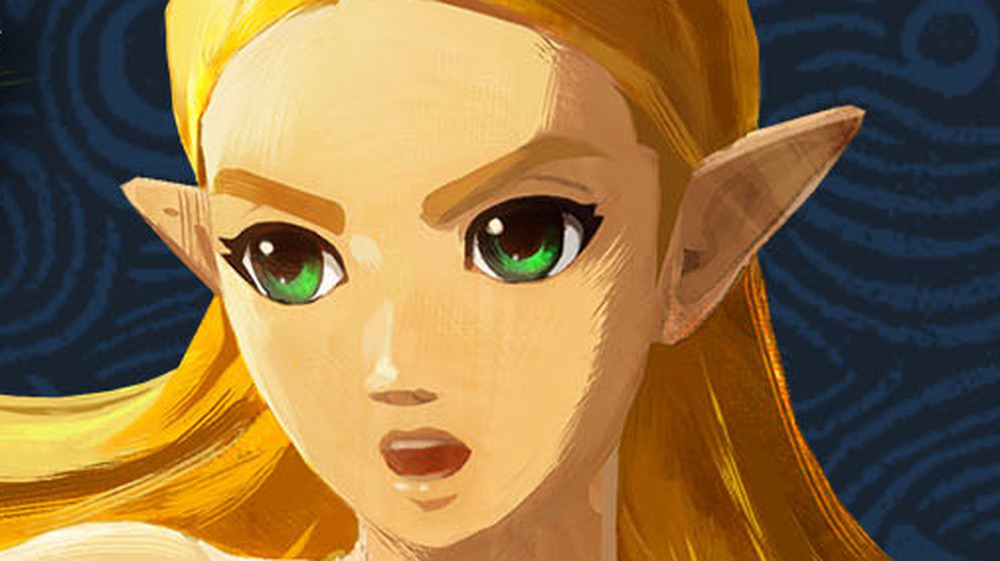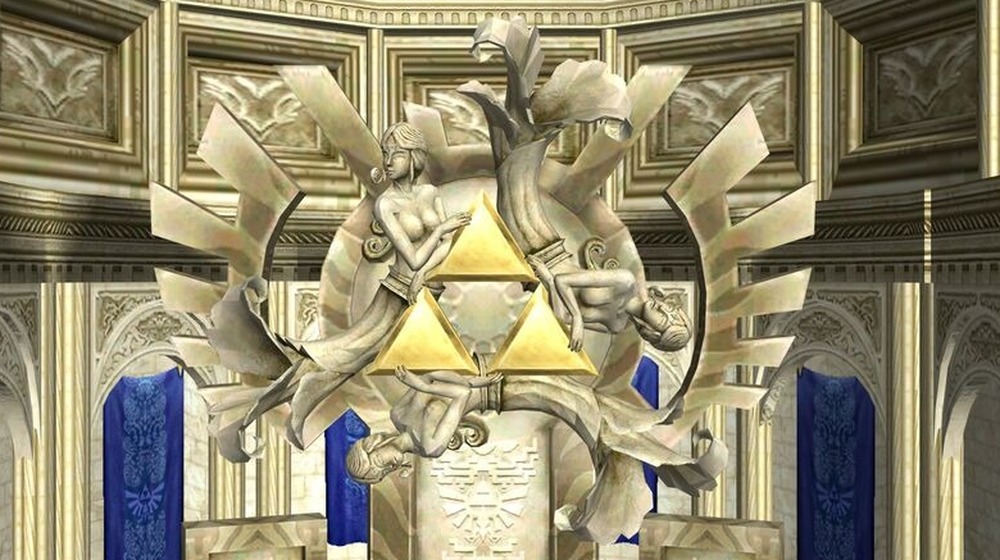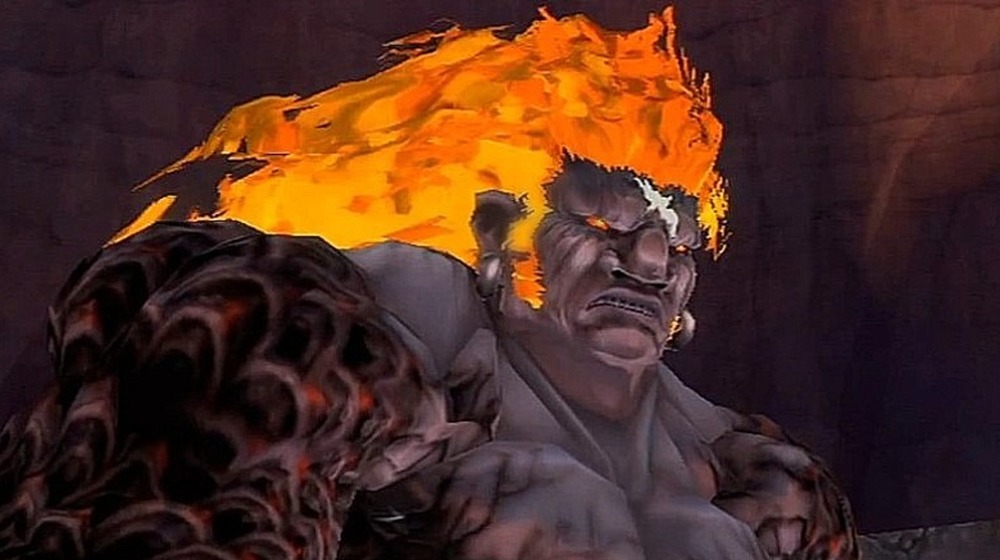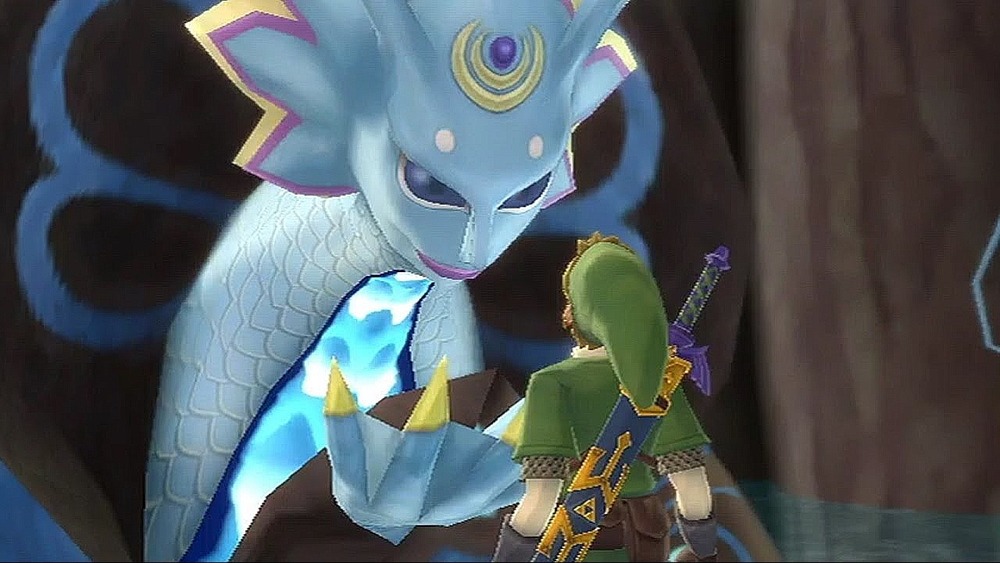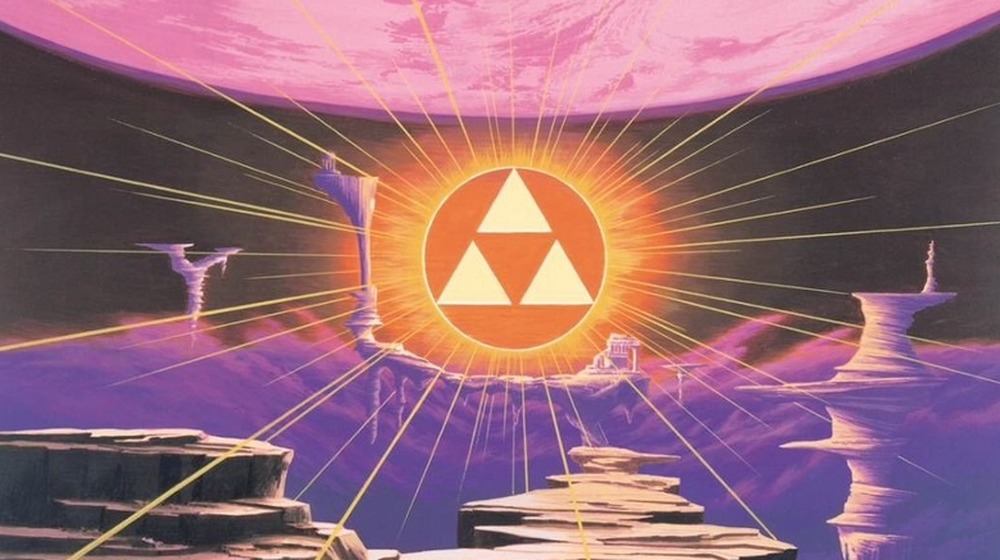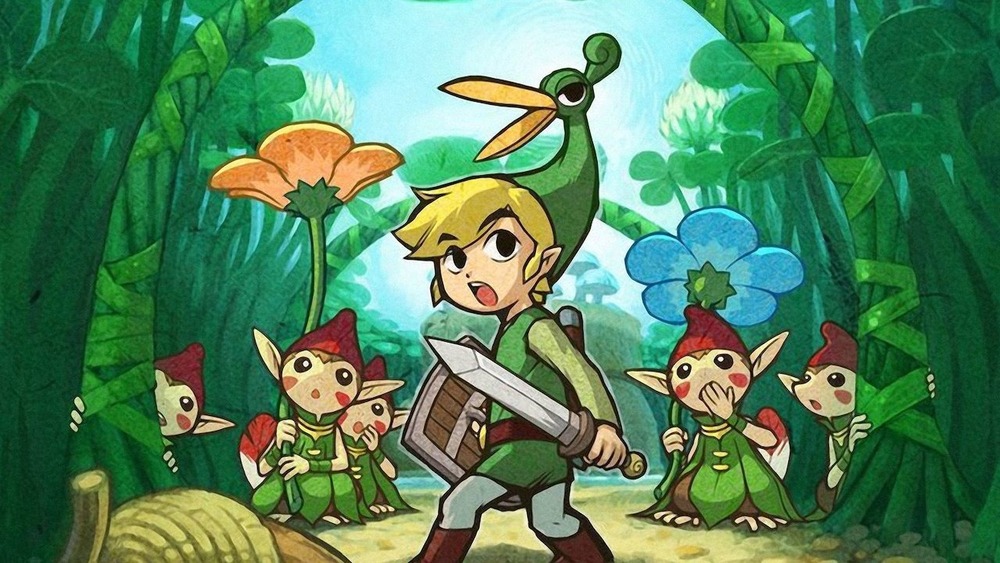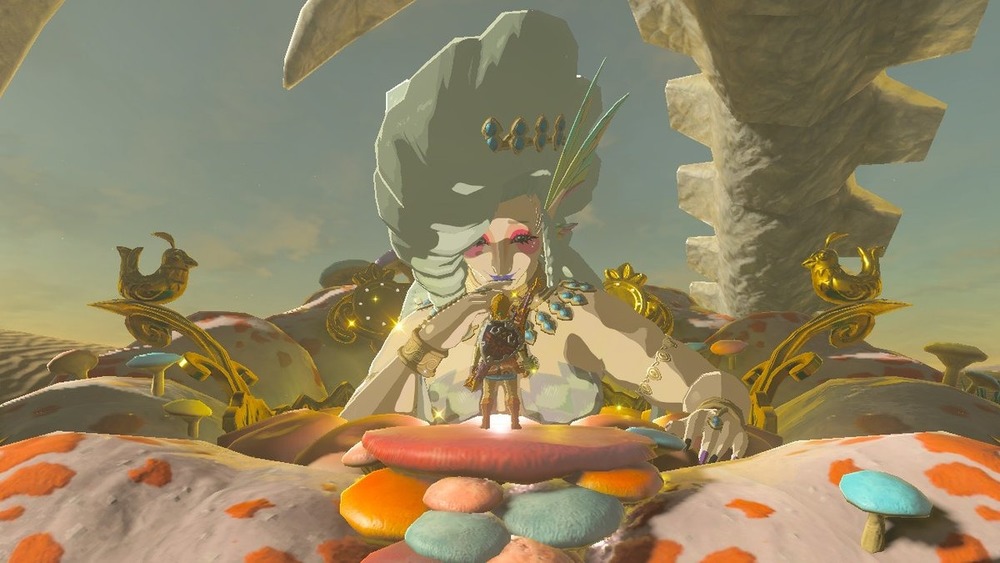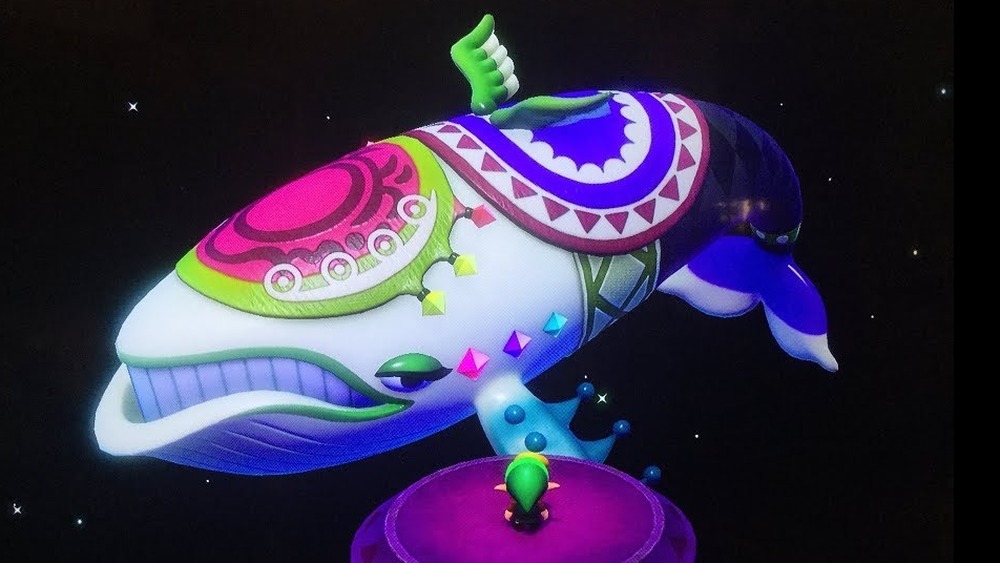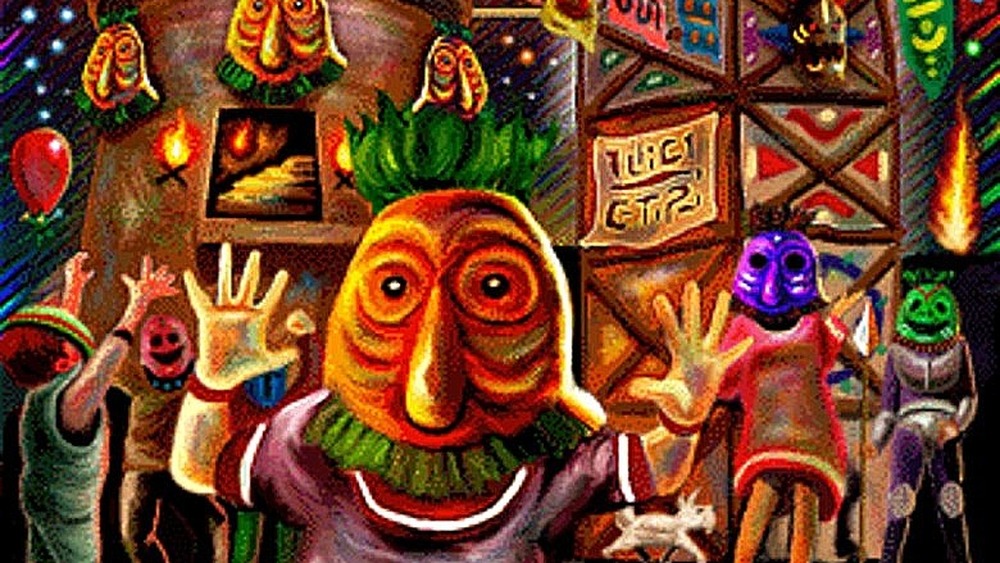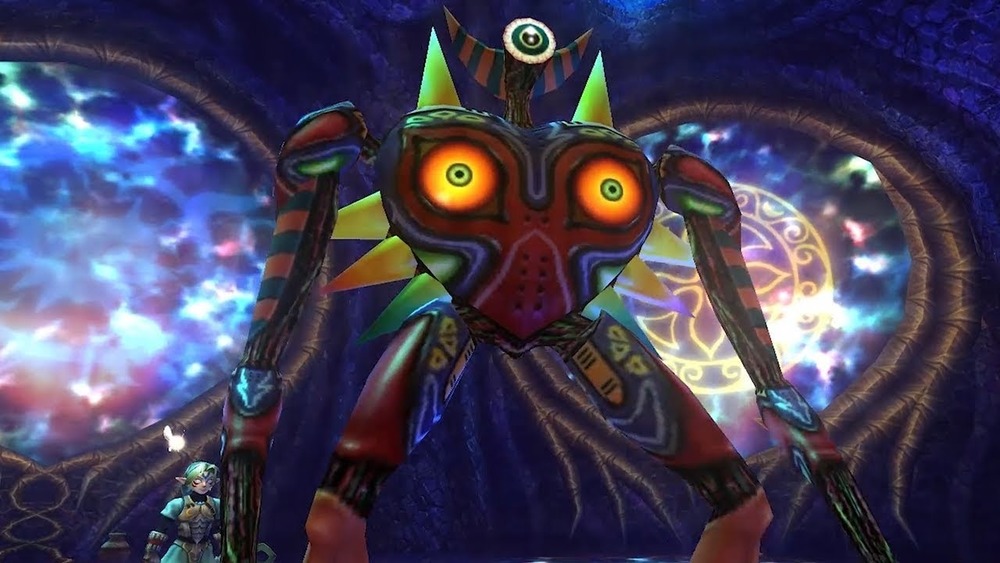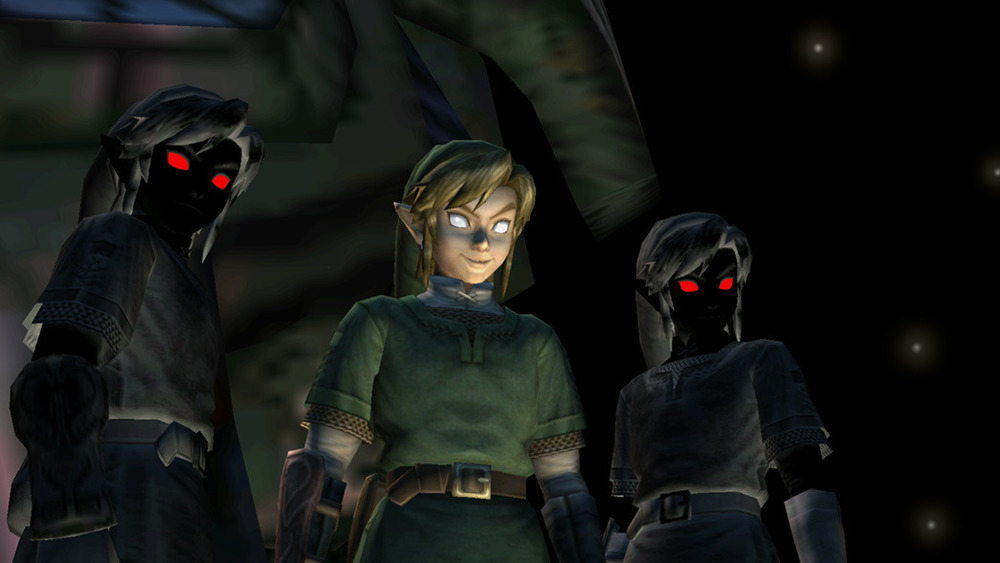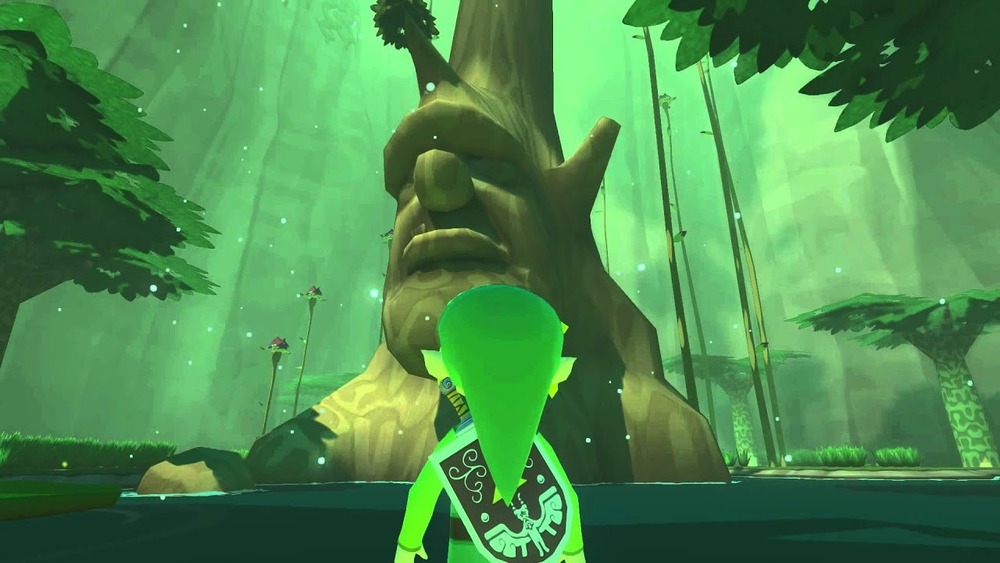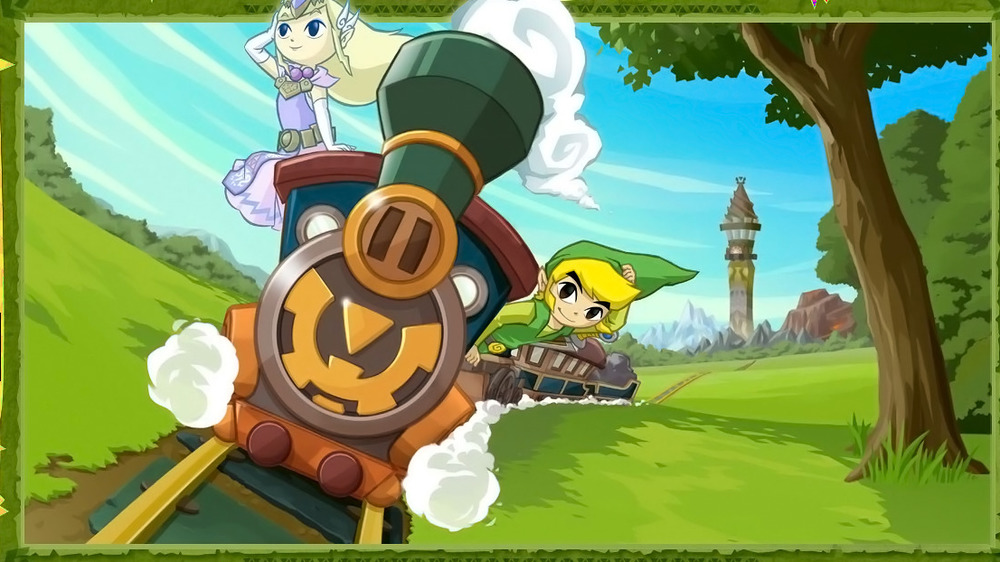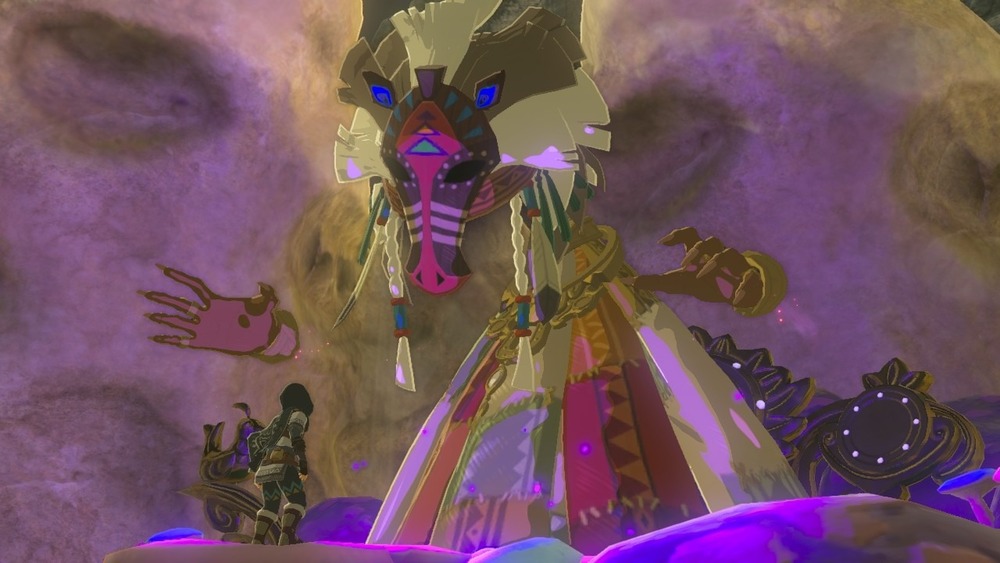The Mythology In The Zelda Series Explained
The Legend of Zelda has transformed into one of Nintendo's most respected franchises. Part of what has propelled it to popularity is its variation on common adventure tropes and strong world-building. The series has some of the most passionate fans in gaming, but there is also a plethora of lore and mythology for any history buff to dive into.
Zelda mythology is filled with stories of destruction and rebirth, horrifying monsters, and all-powerful deities. Additionally, many aspects of mythology within the Zelda series mirror legends from various real-world cultures. For example, though there are different versions of him throughout the games, Link is often a hero chosen by the Gods and then tested. Stories of Link's divine selection echo elements of tales from Greek mythology where mortals achieved god-like status for their various deeds. But Link himself is just the tip of the iceberg when it comes to the Zelda mythos.
The following legends, figures, and creatures add to the greater knowledge of the Zelda universe. Although the games have been published out of chronological order, The Legend of Zelda's scattered timeline and the wealth of details presented in the companion book Hyrule Historia showcase intriguing tales that enhance the franchise.
But beware: significant spoilers for the series lie ahead.
The Golden Goddesses and the Creation of the World
The story of the world's creation first appeared in the A Link to the Past manual, but was more fully explored in an Ocarina of Time cutscene. During a time of chaos, three Golden Goddesses descended from above to establish the land of Hyrule and its surrounding areas. Din, the Goddess of Power, created the land. Farore, the Goddess of Courage, created the world's inhabitants. And Nayru, the Goddess of Wisdom, created law and order.
The three deities then departed the world, leaving behind the Triforce: a powerful, wish-granting relic. Imagery of the Triforce is seen across multiple games in the Zelda series and places of worship for the Golden Goddesses exist in titles that feature a more established Hyrule.
While the Golden Goddesses haven't played much of a part in the franchise beyond creating the world, characters with their names exist. In the dual Oracle games on Game Boy Color, Din, Farore, and Nayru appear as oracles. Though oracles in Greek mythology were usually mediums that spoke for the gods, Zelda's oracles have god-like powers needed to keep the world in balance.
Hylia and Demise
Although the Golden Goddesses left an incredibly powerful item behind, they entrusted it with someone capable. According to Hyrule Historia, the goddess Hylia kept the Triforce safe as the world established itself. But with the Triforce's existence came those who would seek it for their own gain. Demise, a mighty demon king, was one such villain. He led an army of monsters against Hylia and was nearly successful in obtaining the Triforce.
Following a great battle, Hylia managed to seal Demise away, albeit weakly. Knowing that the seal would one day break, she devised a plan to stop him for good. First, she sent a plot of land housing some surviving humans and the Triforce into the sky and formed a cloud barrier to keep them safe. As a goddess can't use the Triforce, she then renounced her divinity so she would be reborn as a mortal.
As revealed in a scene in Skyward Sword, Zelda was that mortal. While there are plenty of mythological tales of gods living among humans, it's usually a matter of disguising themselves rather than giving up their divinity and transferring their soul to a mortal vessel.
The Song of the Hero and Demise's curse
In the events that set up Skyward Sword, the first chronological game in the series, Hylia didn't just send the surviving humans to safety. She created a series of tests that a chosen hero would have to complete in order to find the Triforce. Such a hero would be chosen by Fi, a spirit that Hylia created and implanted in her own sword.
There were four powerful beings that Hylia entrusted with a part of her plan. Each one held ¼ of a song that would lead the hero to the Triforce. The first being was Levias, a Sky Spirit that resembles a whale that Hylia tasked with guarding the sky. The other three were dragons, each of whom hid on the surface waiting for the hero to find them. Interestingly enough, the names of these dragon spirits are derived from the three Golden Goddesses: Eldin, Faron, and Lanayru.
Skyward Sword also ended with a cycle of rebirth. Upon Demise's defeat, he cursed the descendants of Zelda and Link with his unending hatred. This set up the entirety of the franchise, which has played out with different versions of the same characters.
The Sacred Realm and the Dark World
The Sacred Realm is an alternate dimension that houses the Triforce. It was created when the Goddesses left Hyrule, and its existence would eventually bring chaos back to the kingdom.
Following Skyward Sword, humans returned to the surface world and founded Hyrule, named for their Goddess. After a time of peace, battles broke out between those looking for the Triforce. Rauru, the Sage of Light seen in Ocarina of Time, constructed the Temple of Time to house the only entrance to the Sacred Realm and sealed it shut. He then gave three sacred stones that serve as keys to some of the surrounding races to keep them safe while the titular ocarina, which opens the Door of Time, was passed down between members of the Royal Family.
Despite being created by the Goddesses, the Sacred Realm isn't infallible. Hyrule Historia states that the Dark World seen in A Link to the Past, which is chronologically after Ocarina of Time, is the same Sacred Realm, twisted by Ganon's malevolence following his banishment.
The Picori Legend
After Hyrule was established and Rauru hid the Triforce away, the kingdom was once again cast into shadow by evil beings. At this time, a Picori, a member of a race of Minish beings, descended from above, bringing a sword and a golden light. "The hero of men" then used the sword to seal away the dark beings in a chest and bring peace to Hyrule. This is the legend spoken of at the beginning of The Minish Cap.
Hyrule Historia revealed that the "golden light" is the Light Force, a source of power that originally resided in all things. The Minish Cap begins with the festival that Hylians celebrate every year in honor of the Picori. Legend states that a door to their world will open once every 100 years.
The Picori may have been based on the Koropokkurru beings from the folklore of the Ainu, an East Asian group indigenous to Japan. The Koropokkurru were helpful, but didn't like to be seen, often trading goods with the Ainu during the night. In The Minish Cap, the Picori only show themselves to children.
Fairies
Fairies are popular figures in a variety of mythological tales from different cultures. These beings date back to the Middle Ages and Greek, Celtic, French, and other European cultures include them in their folklore. Throughout various stories, fairies could be mischievous, but they also liked to help humans.
The fairies in Zelda are the helpful kind. In many games, normal fairies can be used to restore Link's health, even bringing him back from the brink of death. In classic mythological stories, fairies can take on a number of appearances. But the Great Fairies of Zelda seem to take inspiration from the ageless and sometimes winged women commonly shown.
Link usually has to go out of his way to find a Great Fairy, which might derive from the fact that classic fairies often hid in forests or underground. But the search is always worth it. Some Great Fairies, like those in Ocarina of Time, will give Link helpful items while also supplying some of the weirdest moments throughout the series. Others will increase his strength in different ways, like in Breath of the Wild. Some games even feature a fairy queen, an element inspired by British and Irish folklore.
The Wind Fish
While Levias is the first chronological whale-like spirit to appear in Zelda, it wasn't the first players had encountered. The Wind Fish is a deity seen only in Link's Awakening and is separate from the majority of Zelda lore. The game follows Link not in Hyrule, but after he's shipwrecked on Koholint Island and must find a way off.
As it turns out, the entire island and its residents are creations of the Wind Fish as it dreams. While waking the Wind Fish would allow Link to get off the island, it would also cause its dream, and therefore its creations, to end.
While there is a whale figure in Japanese mythology, the Wind Fish doesn't have much in common with it, other than the fact that it's a whale. Known as the bakekujira, this vengeful skeleton whale was said to appear on rainy nights near fishing villages and bring curses with it. The Wind Fish has more in common with Azathoth from Lovecraftian mythos. This god bears the features of various sea creatures, including whales. More importantly, all of reality is its dream and will disappear once Azathoth awakens.
The Four Giants
In the land of Termina from Majora's Mask, the citizens have their own deities to venerate. This strange land is protected by Four Giants; guardian spirits that reside in one of four areas that surround the central Clock Town. Every year at the Carnival of Time, the townspeople hold a celebration in honor of the giants. They pray to them for a bountiful harvest and wear masks resembling them. It's believed that couples who marry during the festival and dedicate a mask to their union receive good luck.
Masks have been used in numerous cultures around the world for a variety of reasons. In Majora's Mask, the townspeople use them as a form of celebration. One other such usage, which is seen in Japanese culture, is as representation of certain spirits. Some masks Link collects, such as the Keaton Mask, symbolize an actual spirit in the Zelda world. Others, like the Zora Mask, contain the spirit of a warrior that Link can transform into.
Majora and Fierce Deity
The giants are far from the only deities in Termina. As the Happy Mask Salesman tells Link, Majora's Mask is an ancient artifact that was used by a certain tribe in their hexing rituals. Fearing its power, the tribe sealed it away. These people eventually died out, though the mask remained for the Happy Mask Salesman to find. Only, it isn't simply a mask: it's revealed to be a sentient being, and a malicious one at that.
Link is able to gain the Fierce Deity's Mask, which bestows god-like power on him when he wears it, in the game's final dungeon. While not much is known about this deity, it, along with Majora's Mask, tie into the rest of the game's lore with spirits being trapped in masks.
Additionally, there is one other powerful deity mentioned in Majora's Mask, though she is never seen. Zelda speaks of a Goddess of Time in a flashback, saying she will protect Link. Link's fairy companion Tatl and several citizens also mention her. There has been some speculation that the Goddess of Time is Hylia, given the time travel aspects of Skyward Sword, but it remains unclear.
The Twilight Realm and the Four Spirits
At some point in the long history of Hyrule, powerful beings known as interlopers arrived in Hyrule to find the Sacred Realm and rule over it using their dark magic. But the Goddesses, in one of the few times they played an active role in Hyrule, sent three Light Spirits to seal away these foes.
These interlopers were banished to the Twilight Realm through the use of the Mirror of Twilight and eventually became the creatures known as the Twili. The three spirits of light were named Eldin, Faron, and Lanayru; the same names as the dragons in Skyward Sword. These spirits stayed behind to protect their respective regions of Hyrule, though none of them take on the form of a dragon in this instance.
There is one other light spirit in Twilight Princess: Ordona, who resides over the Ordona Province and Link's home. It's safe to assume that this spirit was also sent by the Goddesses. However, it may not have played a role in banishing the Interlopers because Ordona is not, strictly speaking, a part of Hyrule.
The Sinking of Hyrule
Following Link's triumph over Ganon in Ocarina of Time, Hyrule knew peace. But as he always does, Ganon eventually returned to cause chaos. Only in this era, there was no hero to stop him. Prayers of the citizens for the return of the hero brought no results. So instead, King Daphnes Nohansen Hyrule left the fate of his kingdom in the hands of the Goddesses.
Their solution was to flood the land, sealing Ganon away again as Hylians ascended to mountain-tops that would one day be islands. This is the story told at the beginning of The Wind Waker, a game in which Link's adventures in Ocarina of Time are passed down as legend.
Floods feature in religious tales throughout multiple cultures; the most well-known is perhaps the Christian god's flooding of the land and the story of Noah's ark. In Greek myths, Prometheus' son Deucalion built an ark when Zeus attempted to destroy humanity with a flood. No matter the culture, these divine floods are usually stories of beginning the world anew with suitable survivors left to rebuild.
The Three Guardians
In addition to flooding Hyrule, the Golden Goddesses set measures for a certain hero to defeat Ganon should he return. They each left behind a pearl that could be used as keys to raise the Tower of the Gods, a structure hiding an entrance to the sunken Hyrule Castle. The Tower of the Gods stands as one of many examples in which Link has been tested by the Gods.
Each pearl was left with a Guardian Spirit. Din's was given to Valoo, a dragon who lives amongst the bird-like Rito tribe. Farore's was given to the Deku Tree, who lives with the Kokiri. And Nayru's was given to Jabun, a water spirit in the form of a giant fish.
As detailed in Hyrule Historia, these spirits are respective descendants of Volvagia, the Deku Tree, and Lord Jabu-Jabu from Ocarina of Time. The Great Deku Tree has appeared in several titles and is a benevolent spirit, as is Lord Jabu-Jabu. Volvagia, on the other hand, was famously an evil dragon revived by Ganondorf to rule over Death Mountain.
Cyclos and Zephos
Cyclos and Zephos are two frog deities only seen in The Wind Waker. These brothers are Wind Gods seemingly worshipped by the Rito as there are monuments to them on Dragon Roost Island. Zephos' monument holds "Wind's Requiem," a song that allows Link to control the direction of the winds.
Unfortunately, Cyclos' monument is broken, which is why he spends his time at sea creating cyclones to mess with seafarers. But upon defeating Cyclos, Link can learn the "Ballad of Gales." This song lets him call cyclones to transport him to various spots on the map.
While these frog deities are only seen in The Wind Waker, frogs are important figures in folklore. They are often thought to bring good luck, such as in Ancient Greek or Egyptian philosophies that view them as signs of fertility and life. In Japanese, the word for 'frog' (kaeru) also means 'return.' It is viewed as bringing good luck in things returning.
Malladus and New Hyrule
At the end of The Wind Waker, Link and Zelda set out to explore the rest of the sea. And following the events of Phantom Hourglass, they were successful in finding new land. Spirit Tracks is set 100 years later, after a new continent has been discovered and New Hyrule has been founded.
However, this continent was once home to a great evil. Malladus, a Demon King, once waged war here against deities known as the Spirits of Good. Following much bloodshed, the Spirits sealed Malladus underground. They constructed the Tower of Spirits in the center of the continent as a lock on Malladus' prison and railroad tracks that acted as shackles, leading to four temples in the corners of the land. These structures worked in tandem, magically keeping Malladus imprisoned.
It's unclear whether Malladus is tied to Demise's curse upon Link and Zelda. His title of Demon King suggests so, but the fact that he first appeared in an era and place with no Link or Zelda suggests otherwise. Regardless, Malladus was yet another evil entity who escaped his prison that Link and Zelda had to defeat.
Malanya and Satori
Breath of the Wild sees the return of several powerful deities of Zelda lore. The Great Deku Tree once again lives among the Kokiri. And three mighty dragons can be found, seemingly named for the three Golden Goddesses: Dinraal, Farosh, and Naydra.
But there are also a few deities who are new to the mythos. First, there is Satori, the Lord of the Mountain. This glowing, deer-like spirit resides on Satori Mountain, but only appears at certain times. It acts as the protector of all animals who live in the forest and is said to be a reincarnated Sage who once lived on the mountain.
Malanya is a Horse God that can be found in a fountain and brings Link's deceased horse companions back to life for a fee. The names of surrounding areas on the map, such as the Horse God Bridge, imply he was once a powerful force. But when Link finds him, it seems he has all but been forgotten by the citizens of Hyrule. It's also interesting to note that he appears to be a Great Fairy — possibly making him the only male Great Fairy in the series.

